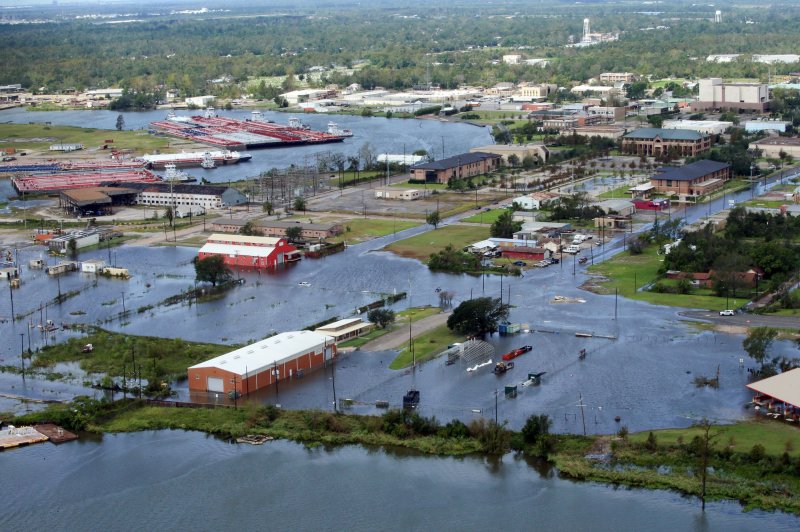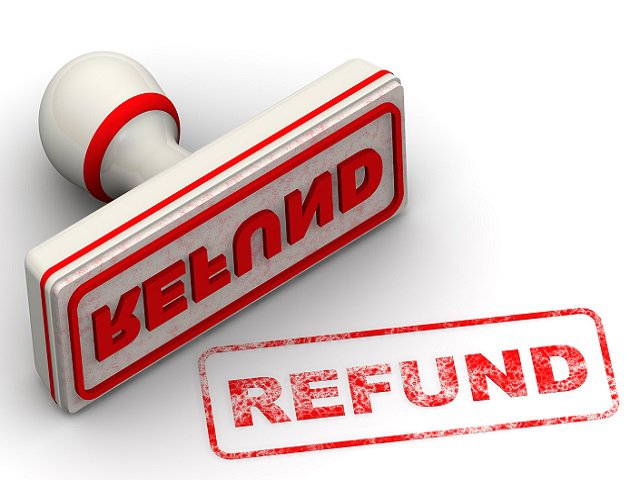Atlantic hurricane season ends with records driven by climate change

U.S. Coast Guard Air Station Clearwater, Fla., conducts an overflight to survey the damage after Hurricane Laura near Orange, Texas, on August 27.
Nov. 30 (UPI) -- Earlier this month, Iota became the 30th named storm in 2020, making this year's Atlantic hurricane season -- which ends today -- one for the record books.
According to a number of climate scientists, global warming set the stage for this year's surge of storms.
ADVERTISEMENT
In addition to testing the infrastructure and emergency response capabilities of coastal communities, the season's storms put stress on both hurricane forecasting models and storm-naming protocols.
"I didn't think I would live to see that, but it's happened. We've never gotten so far into the Greek alphabet," climatologist Michael Mann told UPI in an email.
RELATED Sentinel-6 to help NASA track climate change's effects on oceans
"In fact, people have asked me, what happens if we run out of Greek letters? That's not a question I ever thought I would be asked," said Mann, director of the Earth System Science Center at Penn State University.
Record-setting season
Each year, the Atlantic hurricane season officially begins on June 1, but for the sixth year in a row, a name-worthy storm system surfaced in May. Tropical Storm Arthur skirted the Southeast coast before heading back out to sea, dissipating without causing much damage.
RELATED Climate disasters rising at 'staggering' rate since 2000
On Nov. 13, weeks before the official end of hurricane season, a tropical depression in the southern Caribbean strengthened to become Tropical Storm Iota, the season's 30th named storm.
A few days later, Iota reached reached Category 5 intensity, though it dropped back to Category 4 before making landfall.
Iota killed a few dozen people and displaced hundreds in northern Colombia and Central America, and Honduras and Nicaragua were hit especially hard by the hurricane's high winds and torrential rains.
RELATED Ancient storms could help predict shifts in tropical cyclone hotspots
Between Arthur and Iota, 28 other storms -- 13 of them hurricanes -- earned official names. Twelve named storms made landfall in the United States, six were hurricanes and five hit the state of Louisiana -- all records.
The prolificacy exceeded even those who expected a big year for Atlantic storms, researchers say.
Rapid intensification
In the lead-up to the 2020 hurricane season, modelers predicted the Atlantic was ripe for storms -- hurricane forecasters suggested the season would produce as many as 25 storms.
But while efforts to understand human-caused climate change have helped scientists build more robust hurricane models, rising ocean temperatures have made short-term forecasting quite difficult.
"One of the real challenges in hurricane forecasting has been predicting rapid intensification, defined as a 35-mph or greater increase in wind speed over 24 hours," Mann said.
"It is something we've seen a lot of in recent years, and often catches us by surprise because the models don't do a good job predicting it. That's problematic because it gives us little advance warning of potentially catastrophic increases in intensity of landfalling storms," Mann said.
In total, 10 of the season's hurricanes underwent rapid intensification. Three storms -- Iota, Delta and Eta -- intensified by 100 mph in fewer than 36 hours, a phenomenon that researchers say has happened four times in more than a century and a half of record-keeping.
Rapid intensification has complicated forecasting efforts, but it's also helped highlight the influence of climate change on ocean storm patterns, researchers say.
Climate change
Hurricanes derive their power from the ocean's thermal energy. As a result of climate change, the oceans and atmosphere have an excess of thermal energy.
Scientists have long suspected that global warming was increasing the threat of extreme weather, including hurricanes.
Separating the signals of climate change from natural variability in a given year or individual weather event, however, has proven difficult, they say.
But according to Mann, the climate change signal "has now risen well out of the noise."
Reduced vertical wind shear set up by a La Nina -- a form of so-called natural variability -- left the Atlantic ripe for the formation of tropical depressions this year, but models suggest hurricanes continue to get bigger and more powerful as a result of rising air and water temperatures.
"We expect a roughly 7 percent increase in maximum windspeed of the strongest storms for each 1 degree Fahrenheit of warming," Mann said. "Since intensity increases as the 3rd power of the windspeed, that corresponds to a 23 percent increase in the destructive potential, a signal that's large enough to see."
Because warm air can hold more water, hurricanes are carrying more and more water, increasing their flooding potential.
"Over the years, climate models have improved and some simulations have shown that the number of intense storms has increased -- and are likely to continue increasing -- and that warmer sea surface temperatures have provided rainier storms," climate researcher Jhordanne Jones told UPI in an email.
Jones said scientists still don't know enough about hurricanes and their inner dynamics to determine how much climate change accounts for the size or behavior of any specific storm.
But when looking at the hurricane season as a whole, he said the influence of climate is more apparent.
"For example, we understand that the Gulf of Mexico and western Caribbean remained -- and is still currently -- warm throughout the year," said Jones, a graduate research assistant in the atmospheric science department at Colorado State University.
"This prolonged warmth is likely due to climate change as the eastern U.S. coast is expected to warm more than the rest of the Atlantic because the sea








